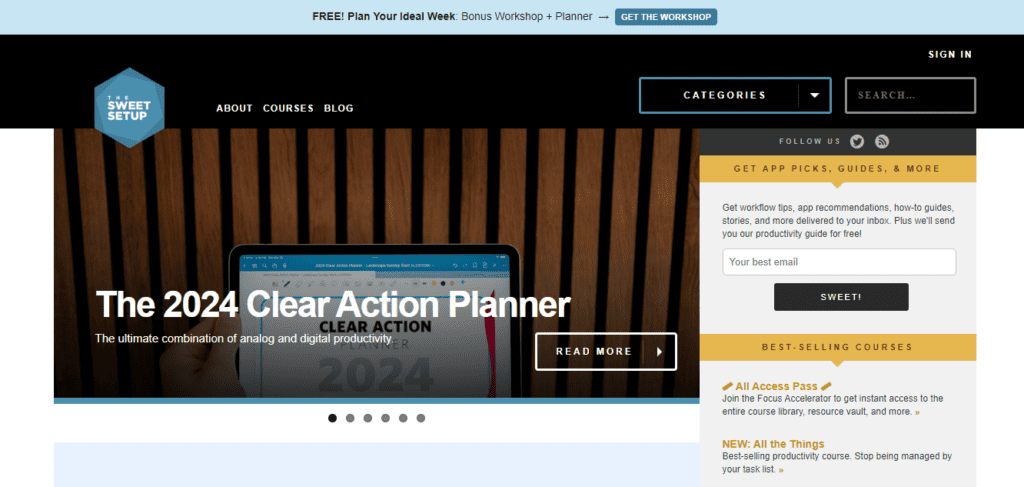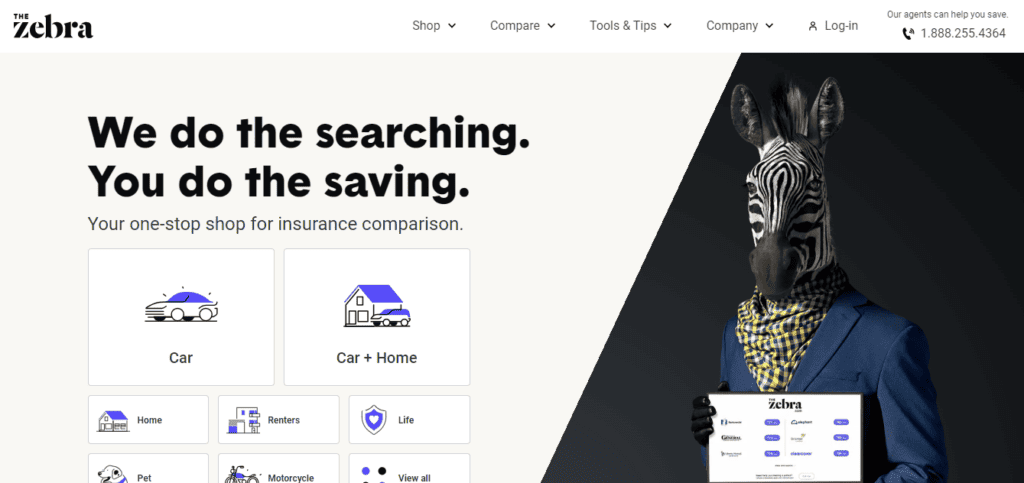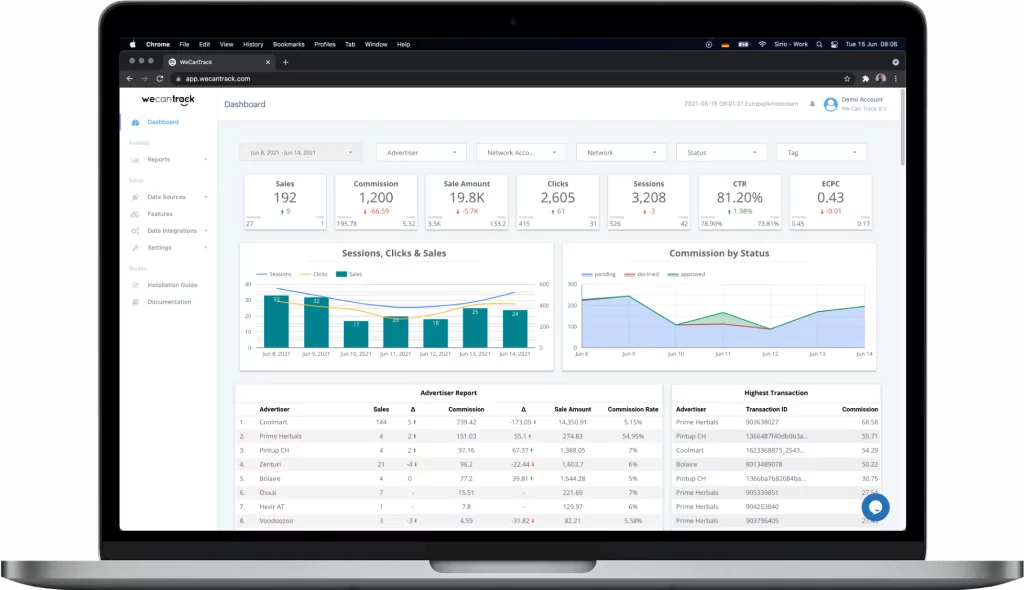What most start-up website owners have in common is the fact that in the crowded virtual space, it becomes difficult to succeed and survive. A lack of focus, in connection, makes it easy for content to become generic, which makes it hard to attain considerable traffic and engagements.
This generalization not only confuses the message of your brand but also blurs the niche for which the product is meant. This means of a low engagement, diminishing visibility, ending finally with no chance to monetization. The constant struggle with an absence of immediate outcomes can be really disheartening to such an extent that many just give up their online drive without a chance.
In this guide, you’ll learn useful steps for building a niche website that not only yields more readers but also keeps them around.
How to Build a Niche Website Overview
4 Steps To Set Up A Niche Website
Here are four steps to help you set up your niche website:
- Choose the right niche. A niche is a specific market segment you will target with your website. When choosing a niche, it’s important to consider your interests, expertise, and the potential profitability.
- Conduct market research. This includes identifying the needs and pain points of your target audience and analyzing the competition in the niche. Try to identify a subject where good information is lacking, which would offer a chance for you to provide that content and help people tackle their questions and problems.
- Set up your website. This includes choosing a domain name, selecting a hosting provider, and setting up a content management system (CMS) such as WordPress. When choosing a domain name, choosing a name that is memorable and relevant to your niche is important. If you choose WordPress for your CMS , it’s important to research the best WordPress themes for affiliate marketing and niche websites.
- Set up conversion tracking. This includes installing software such as Google Analytics on your website, to track user behavior and conversions. This will help you to understand how visitors are interacting with your website and identify areas for improvement.
4 Examples Of Successful Niche Websites
To give you an idea of what a successful niche website looks like, here are four examples of niche websites that have achieved great results in their respective industries:
Wirecutter (Product Reviews)
Wirecutter recommends products based on independent research and testing. Product categories include home & garden, kitchen, tech, health & leisure, baby & kid, style, and gifts.
The site was founded in 2011 by Brian Lam, and in 2016 the New York Times Company acquired The Wirecutter and its sister site, The Sweethome, for a reported $30 million.
It uses subscriptions ($5 every four weeks or $40 annually) and affiliate marketing programs for monetization.
One of the best ways to make money with affiliate marketing is to publish product reviews in your niche that are relevant to your target audience. And, of course, you want to include your affiliate link.
Although Wirecutter is a highly-rated and reputable review website, we do not recommend that you try to emulate them. Their niche is high-quality, fit-for-purpose products that are competitively priced and do not contain rarely used features. However, it’s way too broad for a new niche review website.
You might, for example, want to review toys for kids. But trying to cover gifts for kids, appliances & vacuums, computers, shoes, and many other products like Wirecutter, is unlikely to give you a positive outcome.
However, you can learn how to build a niche website by studying how Wirecutter reviews and promotes products.
For example, Wirecutter complies with all of the following:
- Have a good site structure with clearly defined categories and sub-categories for easy navigation.
- Include a prominently displayed affiliate disclaimer – Wirecutter displays theirs directly below their navigation bar: “When you buy through our links, we may earn a commission.”
- Update content/reviews regularly to ensure it remains accurate and relevant to your target audience.
- Use unique and original product images – no stock photos.
- Give your visitors the pros and cons, and mention alternative products they might want to consider.
- Add value! Do not just copy information readily available on the merchant’s website. Ask yourself why a visitor should click on your affiliate link instead of visiting the merchant’s website directly.
- Mention how you tested the product(s) and your results.
- Explain what criteria you used to review a product.
- Link to other relevant pages/posts on your website.
- Ensure your affiliate links use the rel=”nofollow” or rel=”sponsored” attribute and stand out so they are easy to find.
- Give readers options like Our Pick, Budget Pick, and Also Great. (terms used by Wirecutter).
- Link to external sources you used in your product review.
- Mention why your readers should trust your review(s).
- Do not try to sell products – guide your visitors in the right direction.
- Allow visitors to post comments and questions, but moderate them where necessary.
ThePointsGuy.com (Travel)
This niche website provides travel-related content such as reviews, guides, and tips. It uses affiliate marketing, sponsored content, and display advertising as its top monetization methods.
The Points Guy (TPG) was founded in 2010 by Brian Kelly (CEO).
As the name suggests, it started as a points-and-miles blog. However, it has evolved into a lifestyle media brand focusing on loyalty programs, credit cards, and travel.
Two years later, in 2012, Brian sold the blog to Bankrate for a reported $20+ million in a deal that saw Brian retain 100% editorial control.
In 2017, Brian Kelly was number one on Forbes’s Top Influencers for Travel. That same year, The Points Guy became part of Red Ventures when Red Ventures acquired Bankrate for $1.24 billion.
According to Similarweb, ThePointsGuy.com gets about 12 million visits monthly. And it has more than 3 million social media followers, including Instagram, YouTube, Facebook, TikTok, and Twitter.
In addition, the company has grown to a 100+ team, including editors, writers, and reporters.
The SweetSetup.com (Productivity And Technology)
This website focuses on tips and advice for Apple users on how to boost their productivity – it includes workflow tips, app recommendations, and how-to guides. In addition, the site reviews and recommends the best apps for your Mac, iPad, and iPhone.
Their top monetization methods are affiliate marketing (mainly Amazon) and selling their own products – productivity courses and digital planner.
Shawn Blanc has been writing about Apple apps since 2007. In 2011, he quit his job to spend more time with his family and write full-time from home.
He started his personal blog ShawnBlanc.net in 2011 – the same year he quit his job. After that, he founded TheFocusCourse.com, and in 2013 he launched TheSweetSetup.com.

Our goal is to help you make the most of your time and attention. We do this by researching the very best apps for your Mac, iPad, and iPhone.
According to Similarweb, TheSweetSetup.com gets more than 325K visits monthly. However, Shawn claims the site is trusted by 500K website readers every month, which is likely a more accurate figure.
TheZebra.com (Insurance)
The Zebra is a one-stop website in the insurance quotes and comparisons niche. They work with 100+ companies to generate personalized quotes in 5 minutes.
They use affiliate marketing and lead generation as their top monetization methods.
The Zebra was founded in 2012 by Adam Lyons and co-founder Joshua Dziabiak.
The company received $1.5 million in seed funding from investors, including Mark Cuban from Shark Tank. Subsequent funding rounds included $3 million in 2013, $17 million in 2016, $40 million in 2017, and $38.5 million in 2020.
In 2013, the company initialy launched in the two states with the most drivers, namely Texas and California. But by the end of 2013, The Zebra was available to consumers in all 50 states.
Adam is a remarkable entrepreneur. He dropped out of high school at age 15 and founded The Zebra while unemployed, living in a friend’s basement.
He succeeded in growing the company to one of the most visited insurance websites in the U.S. and has received numerous accolades, including:
- Empact 100 Award at the United Nations for top companies run by entrepreneurs under 35 (2014)
- Inc. Magazine’s 30 Under 30 (2015)
- Forbes 30 Under 30 – Consumer Technology (2017)
To date, The Zebra has produced more than 18 million insurance quotes. And according to Similarweb, their website gets 1.7 million visits monthly.
These niche websites are successful because they provide valuable and informative content to their target audience, they have a clear monetization strategy, and they use tactics such as SEO, social media marketing, and affiliate marketing to drive traffic to their site.
Creating Web Content For A Niche Website
Search engine optimization (SEO) is the process of optimizing your website to improve its visibility in search engine results pages (SERPs). Several tactics can be used and SEO tips by affiliate marketing experts, such as using keywords in your content, creating meta tags, and using internal linking.
It’s important to remember that people need to find your content to read it. Excellent as your content may be, nobody is going to be able to enjoy it when they don’t know it exists. That is way apart from writing the content; you need to think about ways of distribution as well.
SEO is one way to ensure that your content is found by people looking for the answers you’re providing.
Additionally, you can use social media marketing to promote your website and attract more visitors.

Building a successful website starts with passion for your niche. Research your audience's interests, create compelling content, and promote it through SEO, paid ads and social media. Engage with your audience regularly to foster a loyal following.
Monetizing Your Niche Website
Once you have built your niche website and started to attract visitors, the next step is to monetize it. There are several monetization methods available for niche websites, such as affiliate marketing, advertising, branded content, and e-commerce.
- Affiliate marketing is the process of partnering with other businesses to promote their products or services in exchange for a commission. This can be a great way to increase revenue without having to create your own products or services and it’s our recommended method for monetizing your niche website. You can quickly learn how to start in affiliate marketing and add affiliate links to your content.
- Advertising is another monetization method that can be used for niche websites. This includes displaying ads on your website and earning revenue from clicks or impressions.
- Branded content means that you allow other companies to post an article on your platform, such as a blogpost or advertorial, in exchange for money.
- E-commerce is another monetization method that can be used for niche websites. This includes selling products or services directly from your website.
- Buying & selling websites or ‘website flipping‘ is also a strategy to can earn you big bucks if you know what you are doing to increase its value.
Affiliate Conversion Tracking For Nice websites
Tracking and attribution of your affiliate marketing efforts on niche websites is a crucial aspect for any business looking to scale up and increase their revenue.
Using wecantrack’s advanced tracking and attribution features, affiliate businesses can now dive deep into their data to understand which landing pages are generating revenue, which traffic sources are the most profitable, have access to an all-in-one affiliate dashboard, and more.
This is done by automatically tracking every time a user clicks on one of the affiliate links on your niche website. A unique click ID is placed every time a click happens. With that ID, once the sale is fetched from the affiliate network the system can automatically attribute and track the sale to the correct session and user.
This data can then be integrated into a variety of tools such as Google Analytics, Google Ads, Facebook Ads, and more. Integrating your conversion and sales data into these tools, can gain valuable insights into your marketing efforts, such as which pages and campaigns are performing the best and where you should focus your efforts to maximize ROI (return on investment).

Final Thoughts
Building a niche website is an effective way for small businesses to establish an online presence and reach a specific target audience.
Choosing the right niche, creating engaging and informative content, leveraging SEO, and monetizing your website can establish a strong online presence and attract a loyal audience.
Remember that building a niche website takes time and effort, but by following the steps outlined in this article, you can set yourself up for success.








